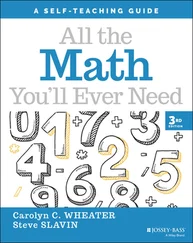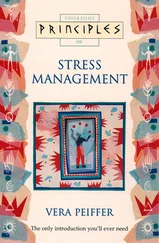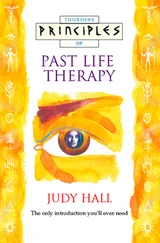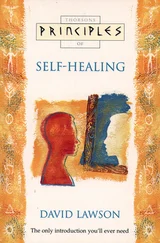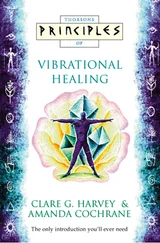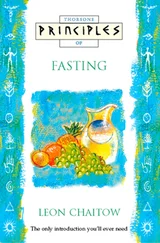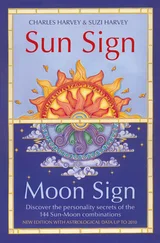The great American astrologer Charles Jayne (1917–1989) described astrology as cosmo-ecology. This is very close to the truth, because at the heart of astrology is the concept that all things, from atoms to universes, are part of one another and of one over-arching unity. Part and whole are seen as identical in essence (but not in function), intimately connected and in continual resonance with each other. This cosmo-ecology is seen not only as applying to our Earth within the solar system, but equally to our solar system within our galaxy, around which our Sun carries us in about 230 million years. And again beyond the galaxy to the super-galaxies and super-super galaxies, ‘wheels within wheels’, extending outward to the ultimate oneness of the Infinite One.
This concept of unity is at the core of the words we use to describe the totality of things. The word cosmos comes from the Greek kosmos , meaning an orderly, beautiful harmony, as in the word cosmetics. Likewise the word universe comes from the Latin uni-versum , meaning ‘to turn towards the One’. Hence, an ancient university was a place where one studied everything in relation to the One (i.e. the One Truth, the One Knowledge). In German we find the same concept in their word for cosmos, das All , the All, that which contains everything. Or again in English, we find it in that telling sequence of words whole, hale, healthy and holy , which are all from the same Anglo-Saxon root meaning to be whole, robust, at one with unity.
Plato, the father of Western philosophy, who set out the first philosophy of astrology in the Timaeus , sums up the primacy of this concept of Unity:
Every diagram and system of number, and every combination of harmony, and the revolution of the stars, must be made manifest as the ONE THROUGH ALL to him who learns in the proper way. And it will be made manifest if, as we say, a man learns by keeping his gaze on Unity.
As Above, So Below that the miracle of the Unity may be petuated.
HERMES TRISMEGISTUS, THE EMERALD TABLETS
Astrology studies the arrangement of planets in the solar system at a particular moment in order to determine the potential of an individual or other entity born at that moment.
In terms of current Western thought, this seems utterly irrational. Viewed holistically, it is entirely reasonable, for the universe is not only a unity in itself, it is a unity of unities. And, as the Platonists pointed out, ‘all unities are identical in essence’. In this way, as the legendary Hermes indicates, ‘the miracle of the Unity is perpetuated’.
The Cosmos itself, and each part of the cosmos including we human beings, is ‘made in the image’ of the ONE, the ‘God Thought’ which thinks creation into existence. In this way, the essential pattern of the ONE is both literally and metaphorically present in every part of Creation, from super-galaxy to solar system, to man, to a cell in the body, to an atom and to the last and least of things. Everything, in this sense, is a metaphor of the primary music of the One and the gods, the original Word.
These sound like very elevated ideas, and one might ask how we get from this sublime oneness down to the rest of the mundane world. That question belongs in another book, but suffice it to say that the ONE expresses itself at each level of creation in very different ways. We see this principle at work in genetics. Hence the possibility of cloning and the re-creation of an entity from a single cell of the original whole, an idea which was exploited to such dramatic effect in the film Jurassic Park. Every cell in an organism contains the instructions for making the whole organism. A blood cell and a skin cell and a hair cell contain identical genetic information, although their actual manifest functions are quite different. At the most basic level, they are each made ‘in the image of the one’, and yet each just gets on with its own job. The ‘wholeness’ of the body needs each cell to do just that.
Likewise, in the life cycle of, for example, a butterfly, it is impossible to see any obvious resemblance between a butterfly’s egg, the caterpillar, the dried-up brown chrysalis, and the colourful new butterfly. Yet each phase leads on in an ordered, intelligent way to the next, and finally to the flowering of the whole organism; genetically each phase contains identical information.
By analogy, a galaxy and a solar system and a man or woman may look very different. But in real terms each is a different expression of the same basic ‘God Thought’. This is what is meant by such cryptic statements as ‘man is made in the image of God’, ‘man is a solar system in miniature’, ‘microcosm and macrocosm are identical in essence’, and what Origen (AD 185–254) meant when he said ‘Thou art a second world in miniature, the Sun and Moon are within thee, and also the stars.’
This invisible bond between Above and Below is invoked every day around the world in the words of the Lord’s Prayer: ‘Thy will be done on Earth as it is in Heaven.’ This is the key to astrology. By studying the orderly movements of the planetary ‘gods’ of the solar system, which contains Earth and all its life, the astrologer is studying the conditions of the Above, in order to understand what is going on Below in the individual ‘cells of consciousness’, such as you and me.
‘In the beginning was the Word.’
THE GOSPEL ACCORDING TO JOHN, OPENING WORDS
Astrology describes the ebb and flow of the primary, divine, creative ‘ideas’, the ‘mind stuff’ which shapes and informs all of life and consciousness. For everything in the cosmos is essentially ‘mind stuff’. All around us we see matter which is embodying particular ideas. Whether we are looking at a book or a flower, we are looking at the effect of ideas.
We can readily see this with human creativity. From making a dress to building a house, a railway or a computer game, each project starts with an idea in someone’s mind. This idea is then translated into some kind of raw material. The materials are always vitally important to the end product, but nevertheless they are secondary to the idea. It is always the idea that in-forms the materials, and never the other way round. Destroy every last car in the world and the idea of a car is sufficient to create a new one. No amount of raw materials will ever create a car without the concept. And the creative, in-forming power of ideas equally applies in nature. A rose starts life as an idea written in genetic code. The DNA code then in-forms the raw materials of earth and water and sunshine and, voila! You have a rose bush.
The same is true in human lives: the thing we want to make, that finished creation visualized in the mind, is always the last thing to be manifested. Anyone who has done any creative cooking knows that the finest meal, whilst being prepared, generates a great deal of apparent chaos as raw materials are chosen, peeled, chopped, cooked, mixed with herbs, and so on. Creation is messy, and we have to keep our gaze – the mind’s eye focused – on that final creation, not to mention the recipe, if we are to believe that all the parts will come together in the right way.
Our personal lives can seem very chaotic, too, if we cannot see the underlying plot. This is what astrology provides – a sense of the plot. The birth chart, as John Addey suggested, is a kind of ‘contract with time and space’; and referring to the contract to remind ourselves of the overall game plan can help us to turn chaos into cosmos. Through studying the birth chart, we find out that what feels like chaos is really overemphasis or imbalance in certain areas – too much water (emotionality), too little earth (not enough practicality), an angular Mars (fullsteam ahead all the time) – and we then are in a position to make more informed choices which further the plot intelligently. Another analogy is the picture on a packet of seeds: it helps to know ourselves from the horoscope’s view of wholeness – are we a delicate fritillary, or a ceanotha which doesn’t like too much sun, or a camellia that hates lime, or a hardy honeysuckle that is happy anywhere? By knowing what suits us we can better grow and flourish and actualize our potential.
Читать дальше


